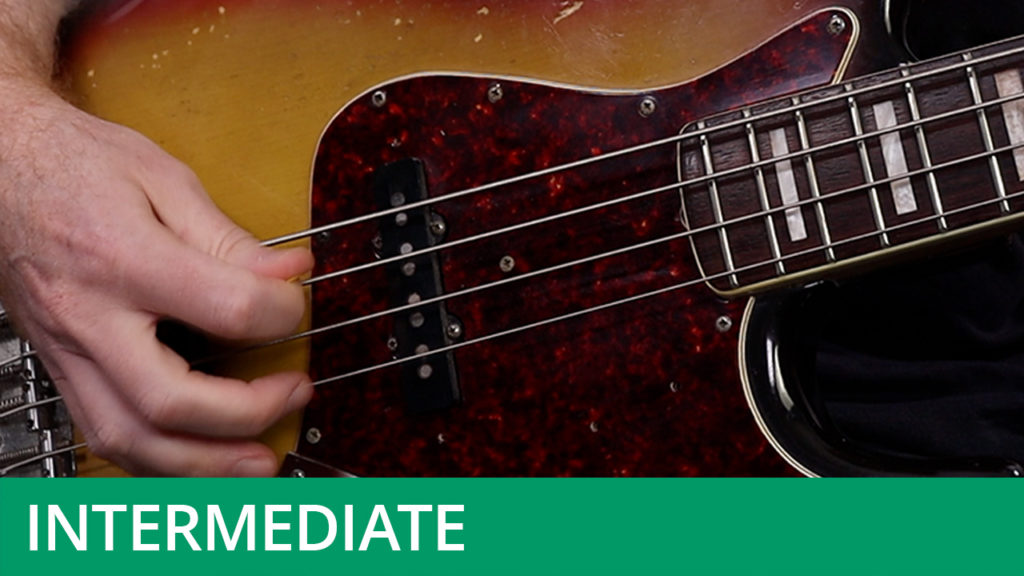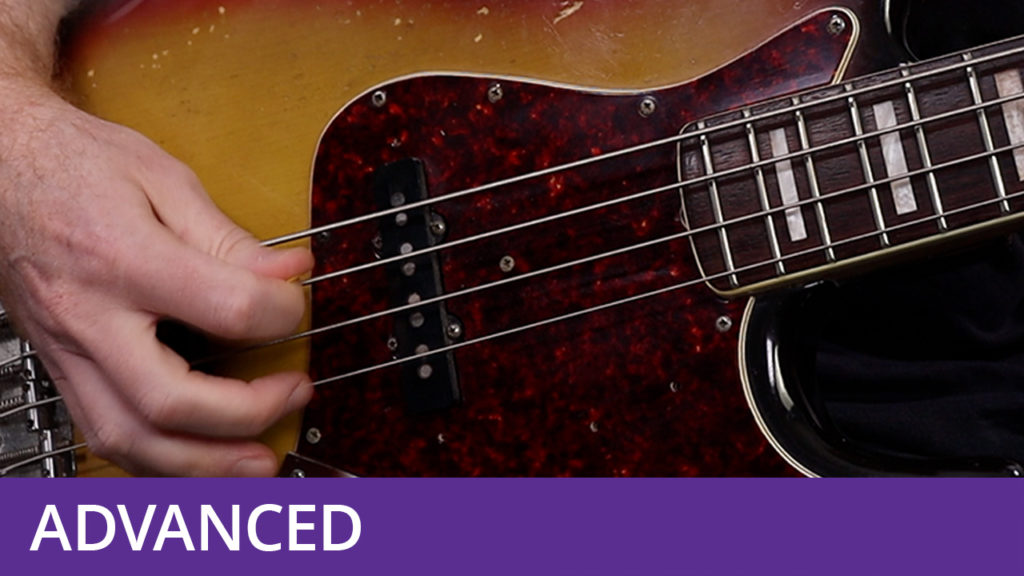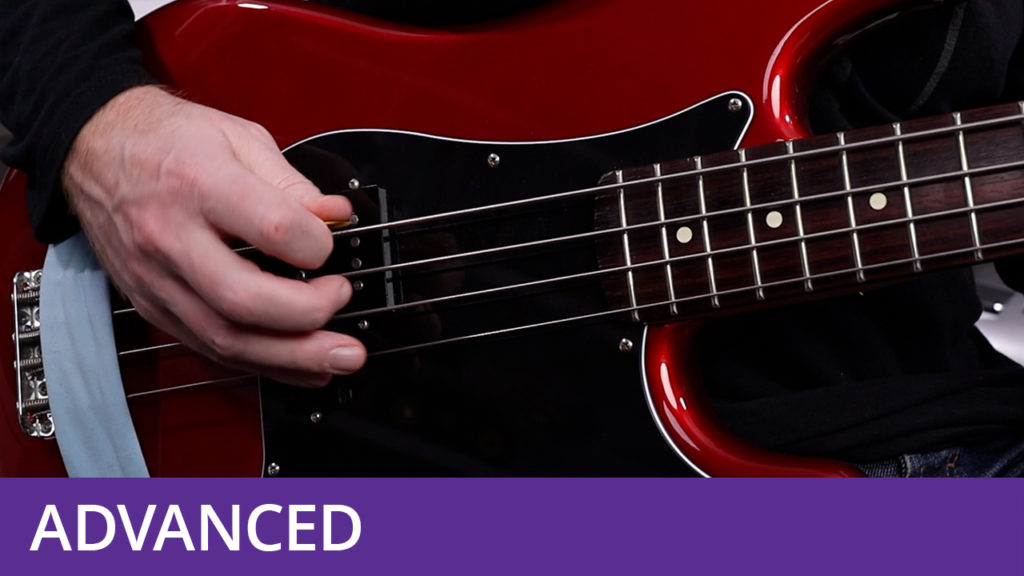20 Funk and R&B Basslines
Course Duration: 1 Hour & 44 Minutes | Difficulty Level: 7
This course contains a series of funk grooves. Funk might seem an unlikely style of music to play with a plectrum, but as bassists such as Carol Kaye, Anthony Jackson and Bobby Vega have proved, it’s actually a style that’s extremely well suited to the technique.
Many of the exercises in this chapter are built on a continuous sixteenth note feel. This is a great feel to play, but accurate timing is essential to making the lines groove. Once you have the necessary fingerings and position shifts for each exercise covered, you should ensure that you practice with either a metronome, a drum machine, or the backing track. Looping the track in software such as Transcribe! is another great way to practice these grooves.
Don’t forget to hit the Download Resources button above in order to download the PDF worksheet and audio files for this course (available to subscribers only).




